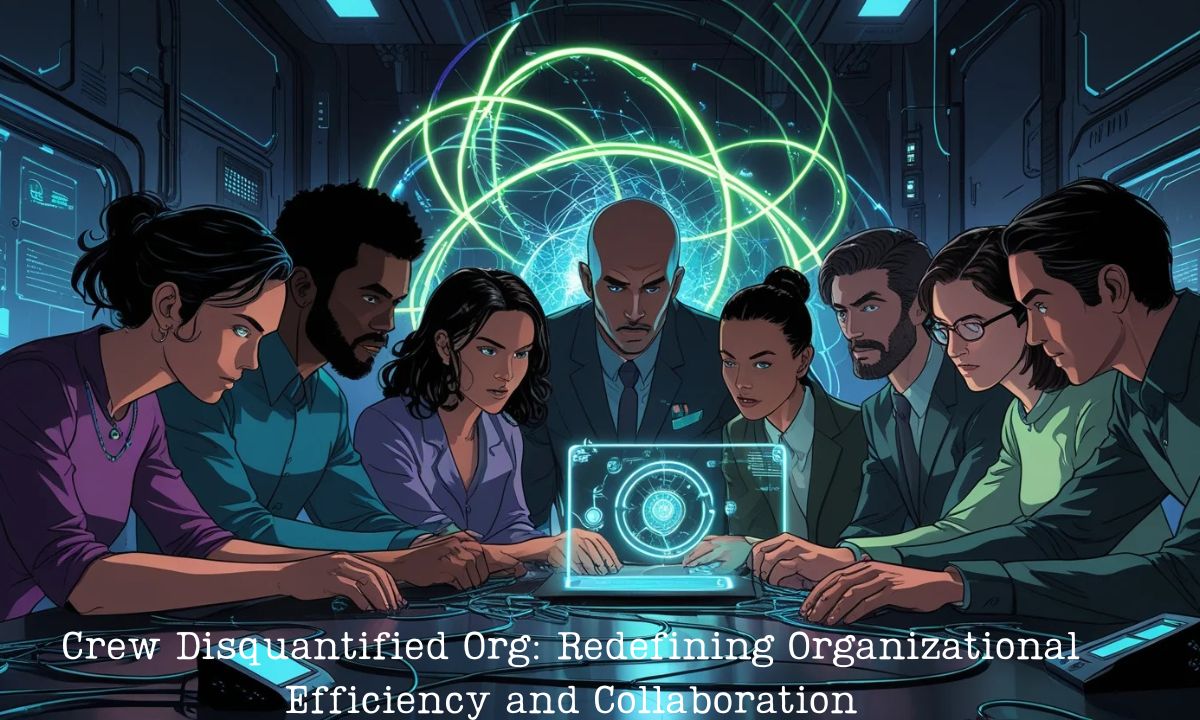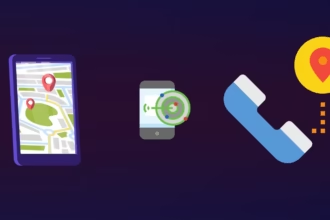Organizational structures have long been a hot topic in management discussions. From traditional hierarchical models to more flexible, matrixed styles, the way a team is designed and operates can make or break a company’s success. Enter the concept of the “Crew Disquantified Org“—a forward-thinking approach revolutionizing how businesses achieve efficiency and foster collaboration.
If you’ve heard this term popping up in leadership and management circles but are unsure what it entails or why it matters, this blog post is for you. We’ll explore the key principles of Crew Disquantified Org, how it differs from traditional models, and—most importantly—how it helps organizations truly thrive.
What is a Crew Disquantified Org?
At its core, a Crew Disquantified Org is an organizational model that removes rigid, quantifiable hierarchies and prioritizes dynamic collaboration among teams, or “crews.” The goal? To create an agile, adaptable, and highly efficient team structure.
Unlike traditional organizational setups where functions are siloed and roles are strictly defined, these “crews” operate with overlapping skills, shared accountability, and fluid roles depending on the project at hand. This approach not only boosts productivity but also fosters creativity and collaboration—two factors critical to success in today’s competitive, fast-changing marketplace.
Key Characteristics of a Crew Disquantified Org
- Dynamic Crews: Teams are formed based on the immediate needs of a task or project rather than fixed departments.
- Role Agility: Employees are empowered to take on different roles depending on their skills and the project requirements, fostering resilience and adaptability.
- Flat or Anti-hierarchical Structure: Decision-making is decentralized, enabling teams to operate independently and work more efficiently.
- Cross-functional Collaboration: Employees from diverse skill sets and departments are encouraged to collaborate, breaking down silos that typically inhibit innovation.
Key Benefits of Adopting a Crew Disquantified Org
Why are so many organizations exploring this model? Because it offers a host of benefits that traditional setups often cannot match.
Faster Decision-Making
With decision-making pushed down to individual crews, organizations can respond more quickly to challenges and opportunities. This speed is especially valuable in industries like technology, where agility is critical to staying competitive.
Enhanced Innovation
Cross-functional collaboration brings unique perspectives together, resulting in truly innovative solutions. Employees are no longer constrained by siloed thinking, which often stifles creativity and progress.
Improved Employee Engagement
Providing employees with agency to take on new roles and collaborate dynamically fosters a sense of empowerment and purpose. They’re no longer just cogs in a machine—they’re contributors to meaningful change and success.
Greater Efficiency
By allocating resources to crews tailored to specific projects or goals, organizations become more efficient. This prevents bottlenecks caused by rigid structures and unnecessary bureaucracy.
Resilience and Flexibility
Modern markets are unpredictable, and a rigid structure often struggles to cope with rapid changes. Crew Disquantified Orgs excel in adapting to evolving conditions, pivoting teams and resources seamlessly to meet new demands.
How to Transition to a Crew Disquantified Org
Implementing a Crew Disquantified Org is not an overnight process. It requires commitment, strategic planning, and a cultural shift. Here’s how organizations can begin the transition.
Step 1: Define Your Organization’s Core Goals
Before dismantling existing structures, clearly outline what your business aims to achieve with this new organizational model. Is it faster delivery, greater employee engagement, or enhanced adaptability? Defining these goals provides a roadmap for transformation.
Step 2: Identify Transferable Skills in Your Team
To enable dynamic role allocation, understanding your workforce’s skills is essential. Conduct skills inventories or encourage employees to self-assess their capabilities.
Step 3: Build a Culture of Collaboration
A Crew Disquantified Org thrives on collaboration, but it requires a cultural shift towards openness and trust. Ensure there’s an emphasis on shared accountability, strong communication, and mutual respect across all levels of the organization.
Step 4: Flatten the Hierarchy
Reduce unnecessary layers of management to empower your crews. This not only speeds up decision-making but also fosters a sense of ownership at all levels.
Step 5: Implement Agile Tools and Technologies
Invest in tools that support agile work environments. Project management platforms like Trello or Jira, communication tools like Slack, and cloud-based file sharing systems can act as an essential backbone for fluid collaboration.
Step 6: Continuously Monitor and Adjust
Success in a Crew Disquantified Org depends on regular evaluation and feedback. Monitor team outcomes, solicit employee input, and be ready to adjust workflows, roles, and team structures as needed.
Real-World Examples of Successful Crew Disquantified Orgs
Several companies have already embraced elements of Crew Disquantified Orgs. Airbnb, for instance, organizes its workforce into small, cross-functional teams responsible for specific user experiences. These teams operate with autonomy, allowing them to innovate quickly while staying aligned with the company’s overarching goals.
Spotify is another great example. Their famous “squad” model mirrors the principles of a Crew Disquantified Org, with autonomous teams collaborating across functions to develop and improve features in real time.
Is the Crew Disquantified Org Model Right for Your Organization?
While this model offers numerous benefits, it’s not without challenges. It requires a cultural mindset shift, significant structural adjustments, and buy-in from employees at all levels.
The Crew Disquantified Org particularly suits industries and businesses where speed, innovation, and adaptability are critical. However, it may not be a fit for highly regulated industries where strict hierarchies and clear accountability are essential.
The Future of Organizational Collaboration
The Crew Disquantified Org is more than just a passing trend—it represents a fundamental shift in how teams operate. By breaking free from rigid structures and encouraging agility and collaboration, organizations position themselves to thrive in an uncertain future.
If you’re ready to explore how adopting this model could transform your business, start small. Identify a single department or project to implement as a pilot. From there, take your learnings and scale the model further.
Developing an organization that resembles a highly skilled “crew” rather than a compartmentalized machine just might be the key to staying competitive. The future of work isn’t static—it’s dynamic, and the time to adapt is now.
















